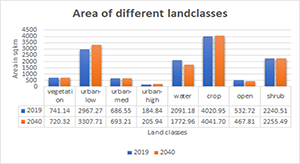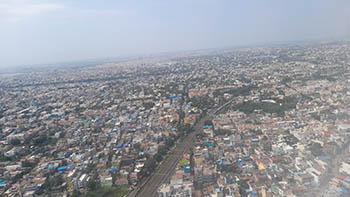CHENNAI: If you think a maze of skyscrapers and concrete colonies is a safe bat for urbanisation, then think twice: In India, the building industry is estimated to account for a quarter of total CO2 emissions. IIT Madras researchers have sounded a wakeup call to the construction Industry: Reduce CO2 Emissions or Perish.
Indian Institute of Technology Madras (IIT Madras) researchers predict that Chennai alone could cumulatively emit 231.9 million tonnes of carbon dioxide (Co2) by 2040.
All of this alarming CO 2 will be from hitherto unknow source of emission: construction and operations of buildings alone owing to rapid urbanisation.
Amid this pall of gloom and doom. the researchers promise a proverbial silver lining in the cloud.
They suggest that switching to renewable sources of energy for operational requirements of buildings would be a key driver in reducing emissions from Chennai.
The study was conducted by a team of researchers from the Centre for Technologies for Low Carbon and Lean Construction, IIT Madras and the Indo-German Centre for Sustainability (IGCS) IIT Madras.
They include Prof. Ashwin Mahalingam, Department of Civil Engineering, IIT Madras, and Mr. Pokhraj Nayak, former student, IIT Madras. 
Prof. Ashwin Mahalingam said in order to achieve emissions targets, we need to benchmark what our ‘business as usual’ emissions are likely to be in future and work backwards.
“This study represents a step in trying to quantitatively address this problem.”
Rapid urbanization is likely to lead to an increase in built stock across the country.
This is mainly due to the emissions that arise out of production of raw materials such as cement & steel. Their transportation to construction sites, energy used during construction and most importantly, the energy used during operation of buildings
The researchers have conducted a quantitative study to address the issue of increasing CO2 emissions due to the construction of buildings in three phased study.
The team leveraged geo-spatial modelling techniques to simulate how Chennai would look in 2040.
The researchers used Life Cycle Analysis (LCA) techniques to understand the extent of carbon emissions that Chennai would accrue due to urbanisation.
THE CHENNAI MAP OF 2040
For the first phase of the study, the researchers used geo-spatial land models developed by The Nature Conservancy - a global environmental non-profit organisation.
They used simulation techniques to develop a futuristic map of Chennai in 2040 that takes into account past trends as well as future constraints.
The model developed by IIT Madras researchers showed an increase in urban built-up areas accompanied by a decrease in water and wetlands.
The graph below shows the change in land classes over a period between 2019 and 2040.
The research team used the Life Cycle Analysis of construction activities. It has estimated the CO2 released during demolition, construction (as a result of transportation of materials and construction activities), and operation of buildings. 
The calculations showed that Chennai would cumulatively emit 231 Million Tonnes of CO2 due to energy consumed by buildings during their construction and operations.
How to reduce the CO2 emissions?
The research team suggested three measures to reduce carbon emissions:
Replace traditional cement with low-carbon cement. Reuse of demolition waste for future construction, they suggest.
Switching to renewable resources to meet the energy requirements of operating buildings.
The researchers found that the single largest contributor to reducing emissions was the change in energy sources.
The use of clean energy sources to supply 50% of a building’s operational energy needs is also likely to result in a corresponding reduction in cumulative CO2 emissions.
It is up to 115 Million tonnes in the period between 2019 and 2040.
Replacing traditional cement with low carbon cement had a lower impact in reducing emissions, they found.
So the IIT Madras researchers have sounded a wakeup call for all, mainly the construction and building industries.
The industry is is literally concretising India's horizons grey, even in the high mountain towns across the Himalayan region, leave along our metros, other big cities and towns.
In fact, your find real estate tycoons everywhere with their brick and mortar structures offering "so called luxurious lifestyle living flats".




